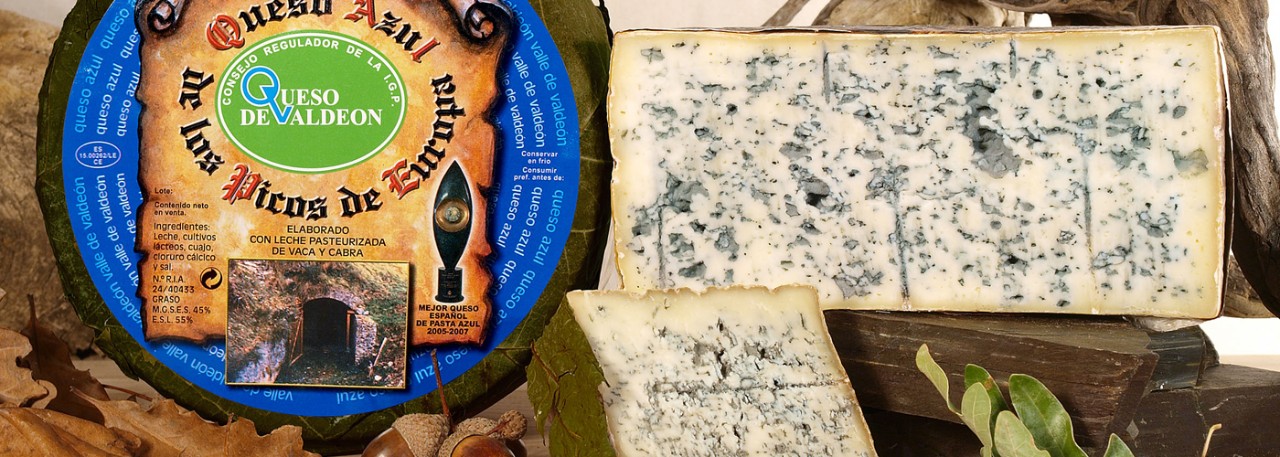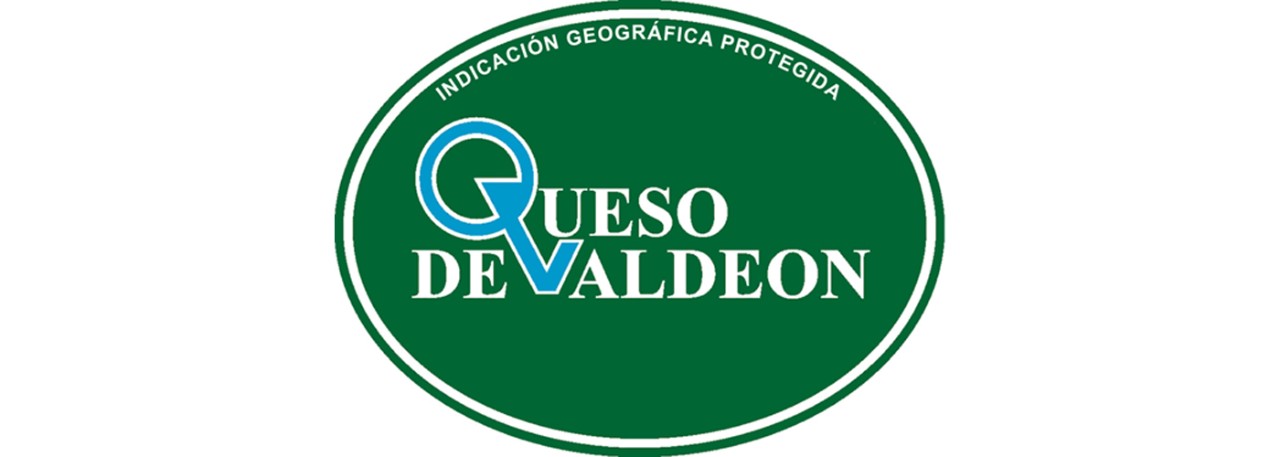.png.transform/rendition-xs/image_image%20(1).png)
Queso de Valdeón PGI
Blue cheese, made from cows’ and goats’ milk, sometimes with ewes’ milk in addition to or instead of the goat’s milk. Ripening lasts at least two months for cheeses made from raw milk, and one and a half for those made from pasteurized milk.
Tasting notes
Intense flavor, slightly lactic, salty, piquant and a little spicy-hot. It has a caramelized aroma and buttery texture that melts in the mouth. The beaten cheese has the same aroma and flavor, but the texture is creamy, becoming more so as the temperature rises.
Other notes
The wheels weigh 0.5-3 kg (1 lb 1 oz - 3 lb 3 oz) but may be sold in portions weighing a minimum of 250 g (9 oz).The rind is natural, thin, soft, rough, with patches of mold, and yellowish with gray tinges. The paste is ivory-white to cream, firm, pasty, and shiny, and is slightly darker at the edges, depending on the degree of ripeness. When cut, there are many large, uneven holes, distributed evenly and colored greeny-blue.
The beaten cheese is presented in packs weighing 20g-1.5 kg (0.7 oz - 3 lb 3 oz). It has no rind, has the same color as the whole cheese and the resulting cream is of medium, buttery consistency. Fat content in dry matter must be 45% or more, moisture 30% or more, and salt, less than 3.5%.
Production / Processing method
Coagulation must be by lactic acid, using the right amount of starter for the process to last 1-2 hours. Penicillium mold is added at this stage, and the temperature of the milk must be kept at 28-32ºC (82-89ºF) throughout. The resulting curds are cut until they form cubes about 1 cm (½”) across and are then left to stand for 14-17 minutes. They are then stirred, the whey is drained off and the curds are transferred to cylindrical molds but not pressed, and left to stand.
They are then salted with dry salt on both sides, and pricked to allow air to penetrate. The temperature in the ripening chambers must be 5-10ºC (41-50ºF) with humidity over 85%. Ripening lasts at least two months for cheeses made from raw milk, and one and a half months for those made from pasteurized milk. The beaten cheese is made from ripened cheeses with the rind cut off. It is cut into pieces, beaten and packed.
Geography / Relief and climate
This is a valley at an average altitude of 650 m (2,133 ft), between the large natural barriers formed by the Panderruedas (1,450 m; 4,757 ft), Pontón (1,311 m; 4,301 ft) and Pandetrave (1,562 m; 5,124 ft) mountains in the southern foothills of the Picos de Europa, in the north-west of the province of León. The mountains hold many natural caves that have always been used by shepherds for shelter and for keeping cheeses.
The climate is typical of high mountain areas. Winters are cold and long with more than 100 days of frost from November to April. Rainfall is heavy, often in the form of snow. Summers are short and cool, with average minimum temperatures of 5-6ºC (41-43ºF) and average maxima of 18ºC (64ºF), with heavy rainfall and high relative humidity because of mist and fog. Average annual rainfall is 1,100 mm (43”) in the valley and 1,800 mm (70”) on the peaks. This microclimate encourages the development of the microbial flora that characterizes the local cheeses.
Regulatory Council
Consejo Regulador de la IGP Queso de Valdeón
C/ El Cantón, s/n
24915 Posada de Valdeón (León)
Castilla y León
Tel: (+34) 987 740 514
quesosv@quesospicosdeeuropa.com
www.quesospicosdeeuropa.com
Sources:
- Spanish Ministry of Agriculture
Intense flavor, slightly lactic, salty, piquant and a little spicy-hot. It has a caramelized aroma and buttery texture that melts in the mouth.


- PGI Valdeon 1
- PGI Valdeon 2

Posada de Valdeón - León (Castile-Leon)
